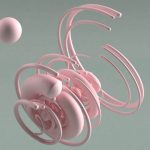
Texture and Depth: How to Integrate 3D Photography into Flat Design Spaces
In the realm of interior design, integrating 3D photography into flat design spaces offers an innovative way to add depth and dimension. The combination of three-dimensional imagery with flat design elements can create a captivating visual contrast, bringing dynamism and interest to otherwise flat surfaces.
Elevating Flat Design with 3D Photography
Flat design focuses on simplicity and minimalism, often featuring two-dimensional elements with bold colors and geometric shapes. Incorporating 3D photography into such spaces introduces a sense of realism and tactile quality that contrasts beautifully with the flatness of the design. For instance, a 3D photograph of a textured surface or an intricate sculpture can serve as a focal point, adding a layer of visual intrigue and breaking up the monotony of flat design. Place these images strategically on walls or as part of a gallery display to create a stunning interplay between depth and flatness.

Creating Visual Interest Through Contrast
Integrating 3D photography allows you to play with visual contrast in your design. Placing three-dimensional images alongside flat design elements creates a juxtaposition that draws the eye and enhances the overall aesthetic. For example, a flatly designed room with minimalistic furniture and decor can be invigorated with a 3D photographic artwork with dynamic angles and textures. This contrast adds visual interest and creates a more engaging and dynamic space. Use 3D photographs to highlight certain areas or provide a backdrop to enhance the existing design elements.
Using 3D Photography to Enhance Spatial Perception
One of the most compelling aspects of integrating 3D photography into flat design spaces is its ability to alter spatial perception. 3D photographs can create the illusion of depth, making rooms appear more expansive or intimate, depending on your desired effect. For instance, a large-scale 3D photo of a landscape or cityscape can make a small room feel larger, while a close-up, detailed 3D image can add a sense of coziness to a larger space. This strategic use of 3D imagery can help balance and redefine the spatial dynamics within a room.